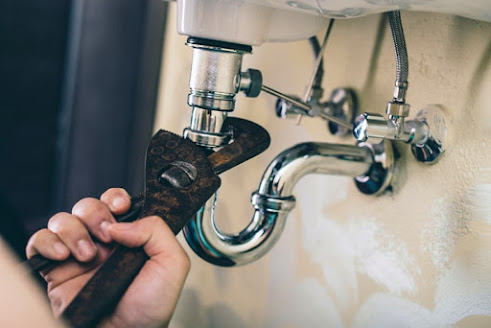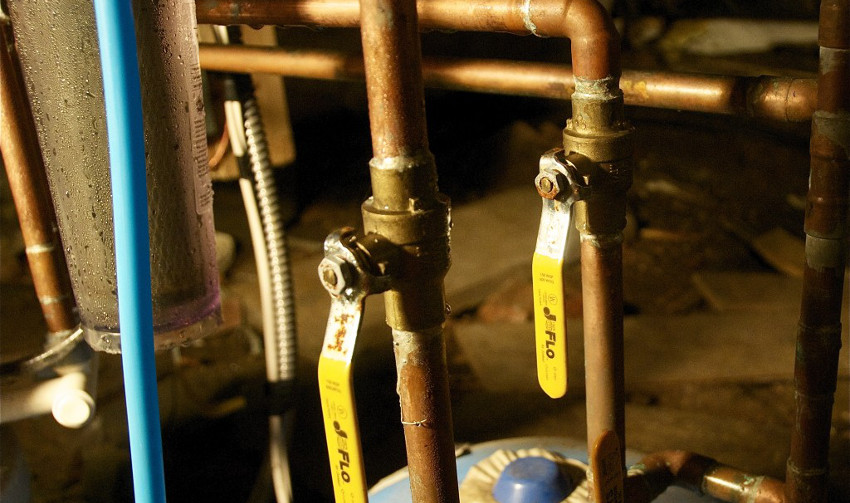Have you been in search of critical info about How To Fix Noisy Pipes?

To detect noisy plumbing, it is very important to figure out first whether the unwanted audios occur on the system's inlet side-in other words, when water is transformed on-or on the drain side. Noises on the inlet side have differed causes: extreme water stress, used valve as well as tap components, improperly linked pumps or various other appliances, improperly put pipeline fasteners, as well as plumbing runs consisting of way too many tight bends or other limitations. Sounds on the drainpipe side usually stem from poor location or, as with some inlet side noise, a design having tight bends.
Hissing
Hissing sound that takes place when a faucet is opened somewhat usually signals excessive water pressure. Consult your neighborhood public utility if you think this issue; it will certainly be able to tell you the water stress in your location and can set up a pressurereducing shutoff on the inbound water supply pipe if needed.
Thudding
Thudding sound, often accompanied by trembling pipelines, when a tap or appliance shutoff is switched off is a condition called water hammer. The noise as well as resonance are brought on by the resounding wave of stress in the water, which instantly has no area to go. Sometimes opening up a shutoff that releases water quickly into an area of piping containing a restriction, elbow, or tee fitting can generate the very same problem.
Water hammer can generally be healed by mounting installations called air chambers or shock absorbers in the plumbing to which the trouble shutoffs or taps are linked. These gadgets permit the shock wave developed by the halted circulation of water to dissipate airborne they consist of, which (unlike water) is compressible.
Older plumbing systems might have short vertical sections of capped pipeline behind wall surfaces on faucet runs for the very same objective; these can at some point loaded with water, minimizing or ruining their efficiency. The cure is to drain the water supply entirely by turning off the primary supply of water valve and opening up all taps. Then open the main supply shutoff as well as close the faucets individually, beginning with the faucet nearest the valve and also finishing with the one farthest away.
Chattering or Screeching
Extreme chattering or shrilling that happens when a valve or tap is activated, and that usually goes away when the installation is opened fully, signals loose or malfunctioning interior parts. The remedy is to change the valve or tap with a brand-new one.
Pumps and devices such as cleaning devices and also dish washers can transfer electric motor sound to pipes if they are poorly linked. Link such things to plumbing with plastic or rubber hoses-never stiff pipe-to isolate them.
Various Other Inlet Side Noises
Creaking, squealing, scraping, breaking, and touching usually are brought on by the expansion or tightening of pipelines, typically copper ones providing warm water. The noises take place as the pipes slide versus loose fasteners or strike close-by house framework. You can frequently identify the location of the trouble if the pipes are revealed; just adhere to the sound when the pipelines are making sounds. Probably you will certainly find a loosened pipe wall mount or an area where pipes exist so close to floor joists or various other mounting pieces that they clatter versus them. Affixing foam pipe insulation around the pipes at the point of call should fix the problem. Make certain straps as well as wall mounts are protected and also provide appropriate support. Where possible, pipeline fasteners must be affixed to massive structural aspects such as structure wall surfaces instead of to framing; doing so minimizes the transmission of resonances from plumbing to surface areas that can amplify and transfer them. If affixing fasteners to framework is inescapable, wrap pipes with insulation or various other resilient material where they call bolts, and sandwich the ends of brand-new bolts between rubber washing machines when installing them.
Remedying plumbing runs that deal with flow-restricting limited or numerous bends is a last option that must be undertaken only after seeking advice from a proficient plumbing contractor. Unfortunately, this situation is relatively typical in older residences that might not have been built with indoor plumbing or that have seen a number of remodels, specifically by beginners.
Drainpipe Noise
On the drain side of plumbing, the chief goals are to get rid of surface areas that can be struck by dropping or hurrying water and also to shield pipelines to contain unavoidable sounds.
In new building, tubs, shower stalls, commodes, and wallmounted sinks as well as basins ought to be set on or against durable underlayments to minimize the transmission of noise with them. Water-saving commodes and also taps are much less loud than traditional designs; mount them rather than older kinds even if codes in your location still permit utilizing older fixtures.
Drainpipes that do not run vertically to the basement or that branch into horizontal pipe runs sustained at flooring joists or various other mounting existing especially bothersome noise issues. Such pipes are large enough to emit substantial resonance; they additionally bring considerable amounts of water, which makes the situation even worse. In brand-new building and construction, define cast-iron soil pipes (the large pipelines that drain pipes bathrooms) if you can afford them. Their massiveness contains much of the sound made by water travelling through them. Likewise, avoid routing drains in wall surfaces shown bedrooms and areas where individuals gather. Walls having drains ought to be soundproofed as was described previously, making use of double panels of sound-insulating fiberboard and also wallboard. Pipelines themselves can be wrapped with special fiberglass insulation created the function; such pipes have an impervious plastic skin (in some cases containing lead). Outcomes are not constantly satisfying.
WHY IS MY PLUMBING MAKING SO MUCH NOISE?
This noise indeed sounds like someone is banging a hammer against your pipes! It happens when a faucet is opened, allowed to run for a bit, then quickly shut — causing the rushing water to slam against the shut-off valve.
To remedy this, you’ll need to check and refill your air chamber. Air chambers are filled with — you guessed it — air and help absorb the shock of moving water (that comes to a sudden stop). Over time, these chambers can fill with water, making them less effective.
You’ll want to turn off your home’s water supply, then open ALL faucets (from the bathroom sink to outdoor hose bib) to drain your pipes. Then, turn the water back on and hopefully the noise stops! If you’re still hearing the sound, give us a call to examine further.
Whistles
Whistling sounds can be frustrating, as sometimes the source isn’t easily identified. However, if you can pinpoint which faucet or valve that may be the cause, you’ll likely encounter a worn gasket or washer — an easy fix if you replace the worn parts!Whistling sounds from elsewhere can mean a number of things — from high water pressure to mineral deposits. Your best plan of attack here is to give our plumbing experts a call. We’ll be able to determine where the noise is coming from and what the cause may be, then recommend an effective fix!
Cracks or Ticks
Cracking or ticking typically comes from hot water going through cold, copper pipes. This causes the copper to expand resulting in a cracking or ticking sound. Once the pipes stop expanding, the noise should stop as well.
Pro tip: you may want to lower the temperature of your water heater to see if that helps lessen the sound, or wrapping the pipe in insulation can also help muffle the noise.
Bangs
Bangs typically come from water pressure that’s too high. To test for high water pressure, get a pressure gauge and attach it to your faucet. Water pressure should be no higher than 80 psi (pounds per square inch) and also no lower than 40 psi. If you find a number greater than 80 psi, then you’ve found your problem!
Next step is to give us a call in order to install a pressure regulator. Trust us, you don’t want to wait to resolve this issue. Not only is the sound annoying, but high water pressure can be destructive to your home — including damaging certain appliances, like your washer and dishwasher.
Dripping
You might be accustom to the slow quiet drip your kitchen faucet makes. You might have even tuned out your bathroom sink dripping and drabbing all day long — but it’s time to find its cause.
A slow drip could signify a variety of easy to fix issues, such as a worn out O ring, or loose part. And by ignoring the drip, you could be wasting up to 2,000 gallons of water a year! So start conserving water — get it looked at ASAP.
https://www.pwessig.com/blog/2018/december/why-is-my-plumbing-making-so-much-noise-/

Do you enjoy more info about Diagnose Unwanted Plumbing Noises? Try leaving a remark directly below. We'd be interested to know your ideas about this piece. Hoping that you come back again in the near future. Enjoyed reading our posting? Please share it. Help someone else find it. Thanks so much for your time spent reading it.
Need Help? Hire Us Now!